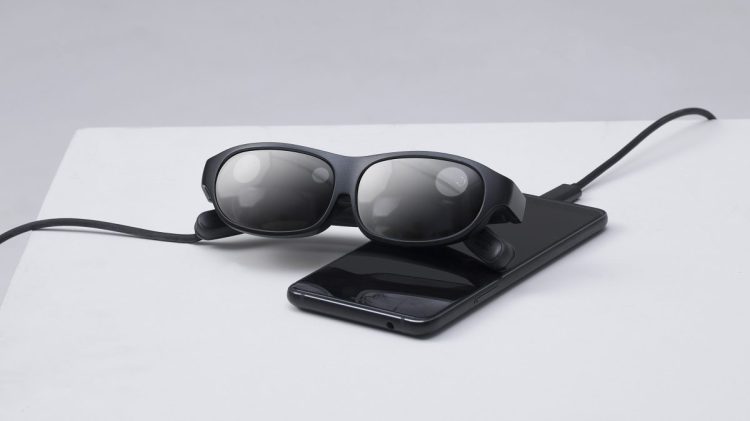Qualcomm thinks premium smartphones have the power to supercharge virtual reality (VR) and augmented reality (AR) experiences, and it’s putting its money where its mouth is. Today at Mobile World Congress in Barcelona, the company detailed XR viewers (Extended Reality) designed to be paired with high-end handsets from the likes of Xiaomi, Vivo, OnePlus, LG, BlackShark, and Asus.
The viewers in question are lightweight and offer inside-out six degrees of freedom (6DoF) tracking, the San Diego chipmaker says, and they’re tethered via USB Type-C to phones containing its flagship chipset: the Snapdragon 855. (That’s the system-on-chip featured in the newly announced Samsung Galaxy S10 series; LG G8 ThinQ and V50 ThinQ 5G; and Sony Xperia 10, 10 Plus, and 1.) They’re also typically sold at lower price points and bundled with phones at point of sale, and they will soon bear a special compatibility badge icon that indicates they’ve met certain baseline performance and compatibility thresholds.
Some of the first XR viewers compatible with Snapdragon 855-based handsets are Acer’s Ojo headset and Nreal’s Light AR glasses, with more on the way this year from other OEMs, such as Pico, Arvizio, NetEase-AR, Iconic Engine, NextVR, SenseTime, HTC, and Wikitude. To support their development, Qualcomm says it’ll expand its HMD Accelerator Program (HAP) — an effort aimed at helping manufacturers reduce engineering costs and decrease time-to-ship — to include prevalidated XR viewer components.
“Our HMD Accelerator Program has been a critical catalyst for ecosystem partners ranging from component suppliers [to] ODMs, to bring quality standalone XR headsets to consumers,” said Hugo Swart, senior director of product management at Qualcomm. “Building upon the momentum of this program, we will extend this to XR viewers and compatible smartphones, starting with smartphones enabled by [Snapdragon 855]. In collaboration with ecosystem stakeholders, we are working toward the common goal of transforming how the world connects and communicates by offering premium, immersive experiences over 5G.”
Qualcomm’s recommitment to XR viewers comes two years after it announced a standalone VR headset platform based on its Snapdragon 820 system-on-chip, and a little over a year after it debuted an upgraded kit packing the Snapdragon 845. More recently, at the Augmented Reality World 2018 Expo in Santa Clara, it took the wraps off the Snapdragon XR1, a reference design for AR and VR headsets offering up to six degrees of freedom (6DoF), motion-tracking controllers, and visual inertial odometry (VIO) head tracking.
When it comes down to it, form factor is the critical difference between Qualcomm’s XR viewers and those built on XR1. While the former contain little in the way of internal hardware, excepting displays and sensors, XR1 headsets have a custom-designed Snapdragon chip, comprising Kryo processors and discrete Adreno graphics, along with a Spectra image signal processor that can output resolutions up to 4K at 60 frames per second across multiple displays with minimal latency.
XR1 headsets command a steeper price, unsurprisingly, and that’s a no-go for a decent chunk of consumers. According to a recent survey conducted by research firm Techanalysis, about 45 percent of would-be HMD buyers think that today’s AR and VR devices are too pricey.
Be that as it may, affordable screenless viewers — headsets like those under Qualcomm’s XR viewer wing, but which lack screens — have seen a significant decline in shipments, in part because device manufacturers have stopped shipping them alongside smartphones. According to IDC, volumes plunged 59 percent in the third quarter of 2018.
On a positive note, the overall sector’s on an upswing. Last summer, IDC optimistically predicted that the AR/VR headset market would grow at a 52.5 percent compounded annual growth rate through 2022, and in December IDC reported that in Q3 VR and AR hardware shipments experienced 8.2 percent and 1.1 percent year-over-year growth, respectively.
Qualcomm’s clearly betting reinvigorated support for its XR1 viewer program will help turn things around in the low-to-mid-range market. Only time will tell.

